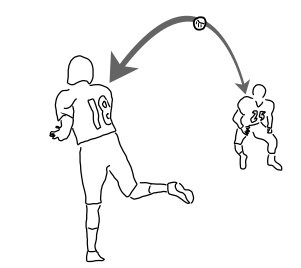2.1: Causality
- Page ID
- 3424
\( \newcommand{\vecs}[1]{\overset { \scriptstyle \rightharpoonup} {\mathbf{#1}} } \)
\( \newcommand{\vecd}[1]{\overset{-\!-\!\rightharpoonup}{\vphantom{a}\smash {#1}}} \)
\( \newcommand{\dsum}{\displaystyle\sum\limits} \)
\( \newcommand{\dint}{\displaystyle\int\limits} \)
\( \newcommand{\dlim}{\displaystyle\lim\limits} \)
\( \newcommand{\id}{\mathrm{id}}\) \( \newcommand{\Span}{\mathrm{span}}\)
( \newcommand{\kernel}{\mathrm{null}\,}\) \( \newcommand{\range}{\mathrm{range}\,}\)
\( \newcommand{\RealPart}{\mathrm{Re}}\) \( \newcommand{\ImaginaryPart}{\mathrm{Im}}\)
\( \newcommand{\Argument}{\mathrm{Arg}}\) \( \newcommand{\norm}[1]{\| #1 \|}\)
\( \newcommand{\inner}[2]{\langle #1, #2 \rangle}\)
\( \newcommand{\Span}{\mathrm{span}}\)
\( \newcommand{\id}{\mathrm{id}}\)
\( \newcommand{\Span}{\mathrm{span}}\)
\( \newcommand{\kernel}{\mathrm{null}\,}\)
\( \newcommand{\range}{\mathrm{range}\,}\)
\( \newcommand{\RealPart}{\mathrm{Re}}\)
\( \newcommand{\ImaginaryPart}{\mathrm{Im}}\)
\( \newcommand{\Argument}{\mathrm{Arg}}\)
\( \newcommand{\norm}[1]{\| #1 \|}\)
\( \newcommand{\inner}[2]{\langle #1, #2 \rangle}\)
\( \newcommand{\Span}{\mathrm{span}}\) \( \newcommand{\AA}{\unicode[.8,0]{x212B}}\)
\( \newcommand{\vectorA}[1]{\vec{#1}} % arrow\)
\( \newcommand{\vectorAt}[1]{\vec{\text{#1}}} % arrow\)
\( \newcommand{\vectorB}[1]{\overset { \scriptstyle \rightharpoonup} {\mathbf{#1}} } \)
\( \newcommand{\vectorC}[1]{\textbf{#1}} \)
\( \newcommand{\vectorD}[1]{\overrightarrow{#1}} \)
\( \newcommand{\vectorDt}[1]{\overrightarrow{\text{#1}}} \)
\( \newcommand{\vectE}[1]{\overset{-\!-\!\rightharpoonup}{\vphantom{a}\smash{\mathbf {#1}}}} \)
\( \newcommand{\vecs}[1]{\overset { \scriptstyle \rightharpoonup} {\mathbf{#1}} } \)
\( \newcommand{\vecd}[1]{\overset{-\!-\!\rightharpoonup}{\vphantom{a}\smash {#1}}} \)
\(\newcommand{\avec}{\mathbf a}\) \(\newcommand{\bvec}{\mathbf b}\) \(\newcommand{\cvec}{\mathbf c}\) \(\newcommand{\dvec}{\mathbf d}\) \(\newcommand{\dtil}{\widetilde{\mathbf d}}\) \(\newcommand{\evec}{\mathbf e}\) \(\newcommand{\fvec}{\mathbf f}\) \(\newcommand{\nvec}{\mathbf n}\) \(\newcommand{\pvec}{\mathbf p}\) \(\newcommand{\qvec}{\mathbf q}\) \(\newcommand{\svec}{\mathbf s}\) \(\newcommand{\tvec}{\mathbf t}\) \(\newcommand{\uvec}{\mathbf u}\) \(\newcommand{\vvec}{\mathbf v}\) \(\newcommand{\wvec}{\mathbf w}\) \(\newcommand{\xvec}{\mathbf x}\) \(\newcommand{\yvec}{\mathbf y}\) \(\newcommand{\zvec}{\mathbf z}\) \(\newcommand{\rvec}{\mathbf r}\) \(\newcommand{\mvec}{\mathbf m}\) \(\newcommand{\zerovec}{\mathbf 0}\) \(\newcommand{\onevec}{\mathbf 1}\) \(\newcommand{\real}{\mathbb R}\) \(\newcommand{\twovec}[2]{\left[\begin{array}{r}#1 \\ #2 \end{array}\right]}\) \(\newcommand{\ctwovec}[2]{\left[\begin{array}{c}#1 \\ #2 \end{array}\right]}\) \(\newcommand{\threevec}[3]{\left[\begin{array}{r}#1 \\ #2 \\ #3 \end{array}\right]}\) \(\newcommand{\cthreevec}[3]{\left[\begin{array}{c}#1 \\ #2 \\ #3 \end{array}\right]}\) \(\newcommand{\fourvec}[4]{\left[\begin{array}{r}#1 \\ #2 \\ #3 \\ #4 \end{array}\right]}\) \(\newcommand{\cfourvec}[4]{\left[\begin{array}{c}#1 \\ #2 \\ #3 \\ #4 \end{array}\right]}\) \(\newcommand{\fivevec}[5]{\left[\begin{array}{r}#1 \\ #2 \\ #3 \\ #4 \\ #5 \\ \end{array}\right]}\) \(\newcommand{\cfivevec}[5]{\left[\begin{array}{c}#1 \\ #2 \\ #3 \\ #4 \\ #5 \\ \end{array}\right]}\) \(\newcommand{\mattwo}[4]{\left[\begin{array}{rr}#1 \amp #2 \\ #3 \amp #4 \\ \end{array}\right]}\) \(\newcommand{\laspan}[1]{\text{Span}\{#1\}}\) \(\newcommand{\bcal}{\cal B}\) \(\newcommand{\ccal}{\cal C}\) \(\newcommand{\scal}{\cal S}\) \(\newcommand{\wcal}{\cal W}\) \(\newcommand{\ecal}{\cal E}\) \(\newcommand{\coords}[2]{\left\{#1\right\}_{#2}}\) \(\newcommand{\gray}[1]{\color{gray}{#1}}\) \(\newcommand{\lgray}[1]{\color{lightgray}{#1}}\) \(\newcommand{\rank}{\operatorname{rank}}\) \(\newcommand{\row}{\text{Row}}\) \(\newcommand{\col}{\text{Col}}\) \(\renewcommand{\row}{\text{Row}}\) \(\newcommand{\nul}{\text{Nul}}\) \(\newcommand{\var}{\text{Var}}\) \(\newcommand{\corr}{\text{corr}}\) \(\newcommand{\len}[1]{\left|#1\right|}\) \(\newcommand{\bbar}{\overline{\bvec}}\) \(\newcommand{\bhat}{\widehat{\bvec}}\) \(\newcommand{\bperp}{\bvec^\perp}\) \(\newcommand{\xhat}{\widehat{\xvec}}\) \(\newcommand{\vhat}{\widehat{\vvec}}\) \(\newcommand{\uhat}{\widehat{\uvec}}\) \(\newcommand{\what}{\widehat{\wvec}}\) \(\newcommand{\Sighat}{\widehat{\Sigma}}\) \(\newcommand{\lt}{<}\) \(\newcommand{\gt}{>}\) \(\newcommand{\amp}{&}\) \(\definecolor{fillinmathshade}{gray}{0.9}\)Learning Objectives
- Examine the foundational assumptions of special relativity
The Arrow of Time
Our intuitive belief in cause-and-effect mechanisms is not sup- ported in any clear cut way by the laws of physics as currently understood. For example, we feel that the past affects the future but not the other way around, but this feeling doesn’t seem to translate into physical law. For example, Newton’s laws are invariant under time reversal, Figure \(\PageIndex{1}\), as are Maxwell’s equations. (The weak nuclear force is the only part of the standard model that violates time-reversal symmetry, and even it is invariant under the CPT transformation.) There is an arrow of time provided by the second law of thermo- dynamics, and this arises ultimately from the fact that, for reasons unknown to us, the universe soon after the Big Bang was in a state of extremely low entropy.1

Initial-value problems
So rather than depending on the arrow of time, we may be better off formulating a notion of causality based on existence and unique- ness of initial-value problems. In 1776, Laplace gave an influential early formulation of this idea in the context of Newtonian mechanics: “Given for one instant an intelligence which could comprehend all the forces by which nature is animated and the respective positions of the things which compose it . . . nothing would be uncertain, and the future as the past would be laid out before its eyes.” The reference to “one instant” is not compatible with special relativity, which has no frame-independent definition of simultaneity. We can, however, define initial conditions on some spacelike three-surface, i.e., a three-dimensional set of events that is smooth, has the topology of Euclidean space, and whose events are spacelike in relation to one another.
Unfortunately it is not obvious whether the classical laws of physics satisfy Laplace’s definition of causality. Two interesting and accessible papers that express a skeptical view on this issue are Norton, “Causation as Folk Science,” philsci-archive.pitt.edu/ 1214; and Echeverria et al., “Billiard balls in wormhole spacetimes with closed timelike curves: Classical theory,”. The Norton paper in particular has generated a large literature at the interface between physics and philosophy, and one can find most of the relevant material online using the keywords “Norton’s dome.”
Nor does general relativity offer much support to the Laplacian version of causality. For example, general relativity says that given generic initial conditions, gravitational collapse leads to the formation of singularities, points where the structure of spacetime breaks down and various measurable quantities become infinite. Singularities typically violate causality, since the laws of physics can’t describe them. In a famous image, John Earman wrote that if we have a certain type of singularity (called a naked singularity), “all sorts of nasty things . . . emerge helter-skelter . . . ,” including “TV sets showing Nixon’s ‘Checkers’ speech, green slime, Japanese horror movie monsters, etc.”
A Modest Definition of Causality
Since there does not seem to be any reason to expect causality to hold in any grand sense, we will content ourselves here with a very modest and specialized definition, stated as a postulate, that works well enough for special relativity.
There exist events \(1\) and \(2\) such that the displacement vector \(\Delta r_{12}\) is timelike in all frames.
This is sufficient to rule out the “rotational” version of the Lorentz transformation shown in Figure 1.1.10. If P1 were violated, then we could never describe one event as causing another, since there would always be frames of reference in which the effect was observed as preceding the cause.1
References
1 One can find a vast amount of nonsense written about this, such as claims that the second law is derivable without reference to any cosmological context. For a careful treatment, see Callender, “Thermodynamic Asymmetry in Time,” The Stanford Encyclopedia of Philosophy.


